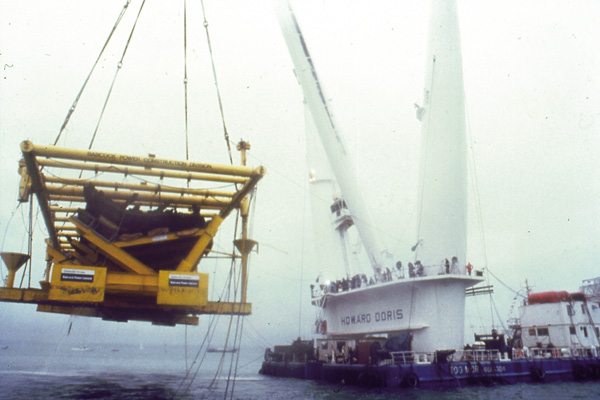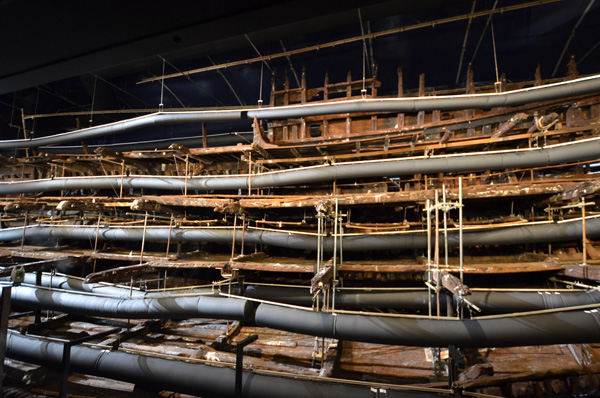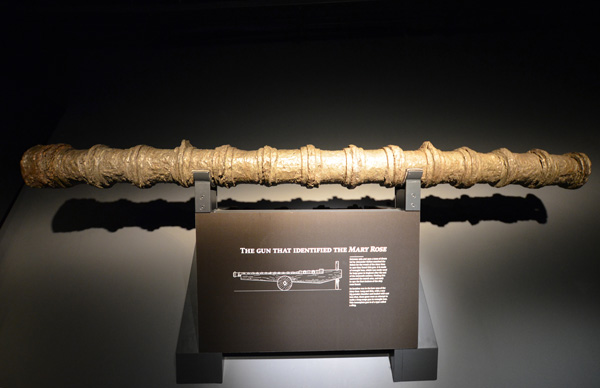Ship shape at the Mary Rose Museum
25/06/2013
Over 30 years after the complex operation to raise the 16th Century warship Mary Rose from the Solent seabed, restoration has almost been completed and the purpose-built museum is now open. Scott Snowden returned to the south coast of England for a long overdue appreciation of maritime history.
Anyone flirting close to their forties might have a distant memory of a small story on the news way back in 1982 featuring some very excited archeologists talking feverishly about a shipwreck lying sunken somewhere off the south coast of England.
If you lived on the south coast of England in the early Eighties however, it was pretty much all you saw on the news – partly because television at that time still only offered three channels, but mainly because it was such a momentous event. Though of course most people my age didn’t fully appreciate this and were simply enduring the drawn out coverage hoping that Knight Rider would start really soon instead.
The shipwreck causing all the commotion was that of the Mary Rose, the flagship of King Henry VIII. This Tudor-era warship sank in a stretch of water between the mainland of southern England and the Isle of Wight called the Solent while leading the counter attack against the vanguard of an invading French fleet in July 1545. That means the remains of this wooden relic are not far off 500 years old.
It was discovered in 1971 and salvaged 11 years later in one of the most complex and expensive projects in the history of maritime archaeology. The surviving section of the hull and thousands of recovered artifacts are of immeasurable value as a Tudor-era time capsule.
Located in Portsmouth, alongside the famous HMS Victory, the Royal Naval Museum and the lessor-known HMS Warrior, it’s a little tricky to navigate to if you’re driving, but it’s worth the occasional wrong turn. Any visit to the UK should really include a trip to the south coast and any visit to the south coast should definitely include a visit to Portsmouth Historic Dockyard.
Having grown up very near this area of England, I was far more interested in hair gel, girls and getting a car than I was in anything of significant historic value sitting on my doorstep. That was three decades ago and thankfully since then I’ve developed a much greater respect and genuine love affair for the region and all its riches.
For the 60 million viewers who tuned in to watch worldwide, images of the decaying disembodied hull held within a yellow support frame-of-sorts slowly surfacing on a grey October morning would forever be immortalized in memory. Even Prince Charles was on hand to participate and things only got interesting when the support frame slipped with an unforgettable clang and nearly crushed part of the hull.
The full story however, is incredible. It is the story of the world’s biggest maritime archeology project, where divers spent 25,000 hours on the seabed and recovered over 19,000 objects, which have taken three decades to restore.
Just under half of the whole vessel was intact and she lay buried deep in mud. Raising her meant overcoming a number of extremely complex problems that had never been encountered before. The operation began in early 1980; first the hull was emptied of all its artifacts, including cannons and gun carriages, pots and plates, rigging and even skeletal remains. It was then strengthened with steel braces, frames and iron bolts then lifted by floating cranes and ultimately transferred to a padded cradle. It was critical that the lift take place within two years of the operation starting otherwise the disturbed hull would be irreversibly damaged by biological decay and tidal scouring.
Concerns had been voiced over this method of salvage and the archeological team was under enormous pressure to succeed and not damage the 16th Century shipwreck in the process. The $4.5million operation was confounded further when divers on the project belonging to the Royal Engineers had to be recalled because of the outbreak of the Falklands War in the South Atlantic. However, on the morning of 11 October, the final lift of the entire package of cradle, hull and frame began and just after 9am, the first timbers of the Mary Rose broke the surface. Despite one minor mishap, the operation was a success. A second set of bags under the hull was inflated with air to cushion the waterlogged wood and finally the whole package was transferred to the barge that would take the hull ashore.
The dry dock that the remains were placed into is itself a listed historical site and was chosen so that the museum could be constructed around the hull as restoration continued, curing like a giant kipper. Consequently, the exhibition is nothing like anything else on offer in Historic Portsmouth. Meant to mimic a ship’s hull, the modern design of the museum’s exterior jars a little as it sits next to Admiral Nelson’s flagship HMS Victory in all her splendor, but necessity was by far the biggest influence in its architectural form.
The remains of the hull now sit upright in the center and the building has three floors that surround it, corresponding to the three decks of the warship. Since only the starboard side remains, the port side of each floor is laid out exactly how it would be on the ship. It is these areas that display the amazing collection of artifacts rescued from the seabed, accompanied by the subtle sounds of life at sea, like the groan of timber, ropes creaking and the occasional gull, played in the background creating a suitable maritime mood.
Almost all of its 500-man crew went down with the ship, along with their tools, clothes, weapons, eating utensils, food, medical implements, musical instruments, games and in some cases pets. All of these have been cleaned, restored and displayed in a manner that clearly shows how the inside of the ship was laid out.
The displays are positively jam-packed, proudly showing the results of years of hard work and the general idea is that the artifacts speak for themselves, which they do to great affect and there’s little in the way of irrelevant infotainment, this is evidently aimed at the mature minded. That said, young children might get bored before long, because there is little interaction.
Dotted around each floor are helpful and very proud museum staff dressed in period costume to make them easier to spot. One of them told me that inside every glass display cabinet there were more climate control electronics to monitor temperature and humidity than you’d find in a top-of-the-range BMW.
A temporary wall separates the hull from the public, but you can watch the restoration continue through glass windows. In four more years the wood will be completely dried, the chemical restoration will be finally finished and the wall will be taken down, leaving a vast, stunning open-plan interior over three floors.
What caused the Mary Rose to actually sink is still open to debate, however, it’s generally believed that she had fired all her guns on one side and was turning sharply to bring her guns on the other side to bear, when she was caught in a strong gust of wind, heeled and took in water rapidly through the open gunports. In addition, poor design of the ship itself meant she was top heavy.
Despite engaging the French a few times in battle during the first half of the 16th Century, the Mary Rose didn’t really achieve a celebrated status throughout her 34-year lifetime in quite the same way as say, HMS Victory did. Consequently, this museum is as much a celebration of pioneering maritime archeology and an insight into the painstaking processes involved in restoring her, as it is an understanding of life aboard a Tudor period warship.
Tickets can be purchased for any combination of sights at the Portsmouth Historic Dockyard. Prices for just the Mary Rose are around $24 if you book online at maryrose.org. But really you should go for the whole day and take in HMS Victory as well at the very least, in which case it’s cheaper to get an ‘all-attractions’ ticket for the day for $42.
Photographs: Scott Snowden, The Mary Rose Museum
This article was originally pitched in June, 2013


